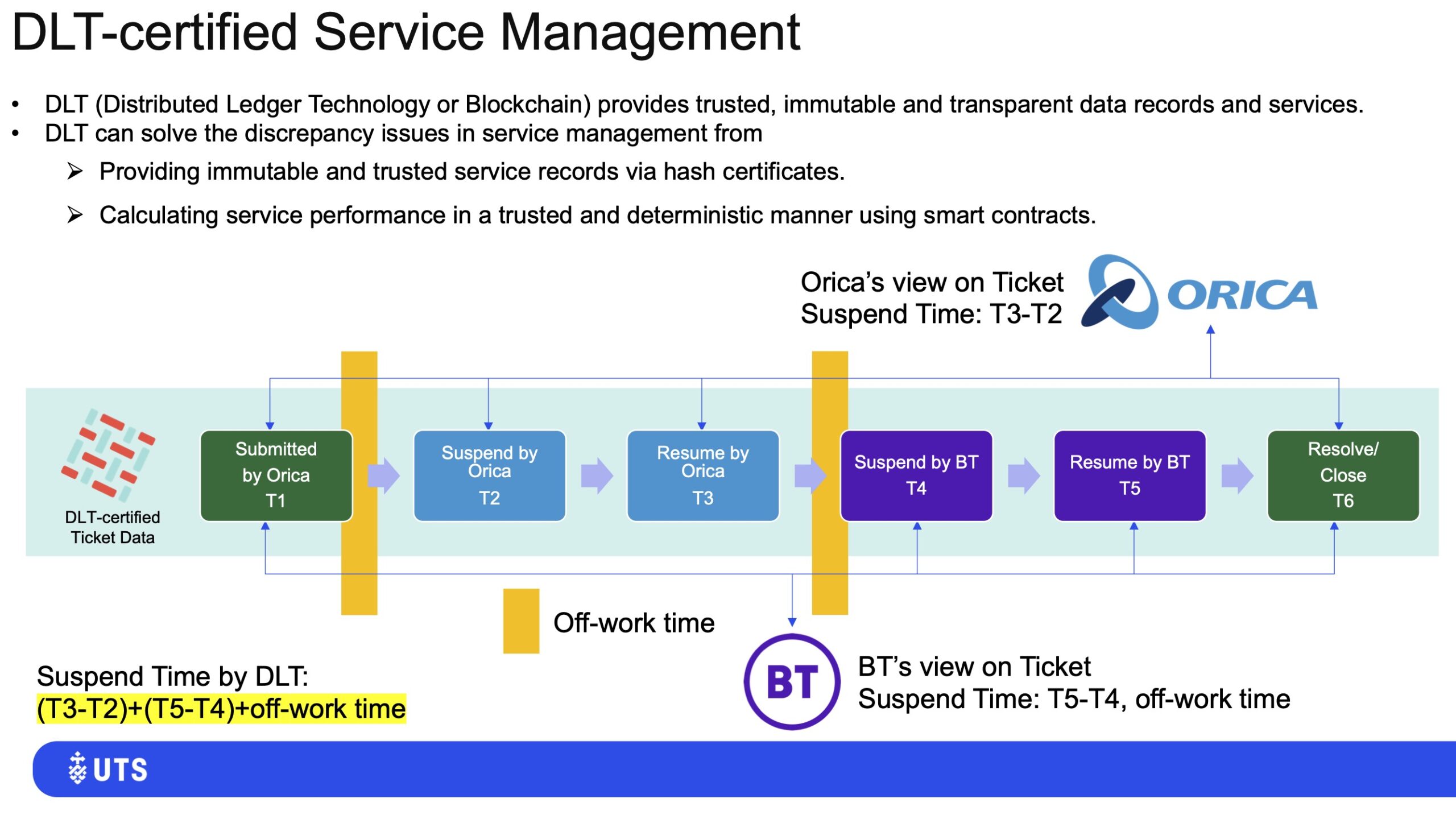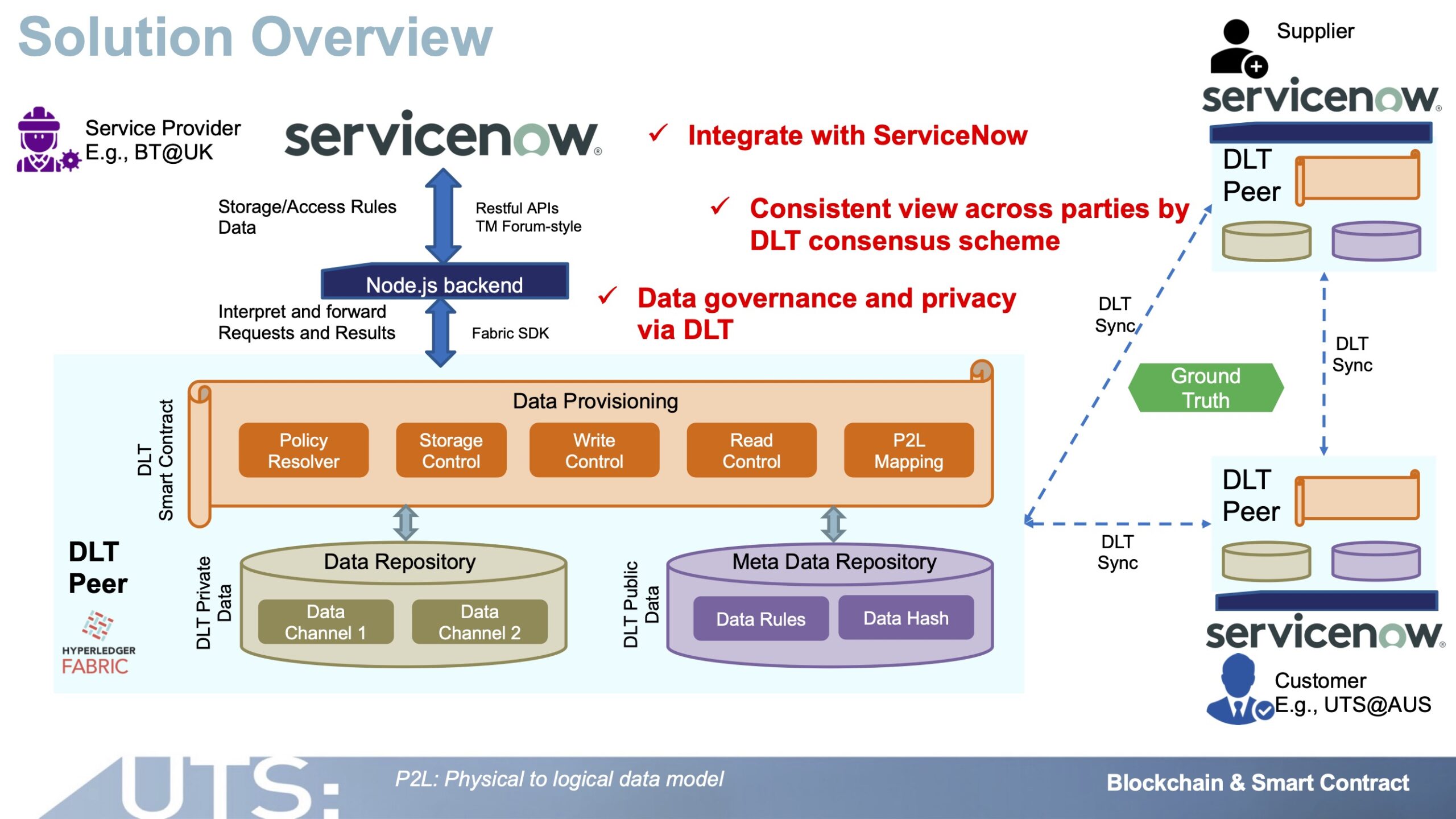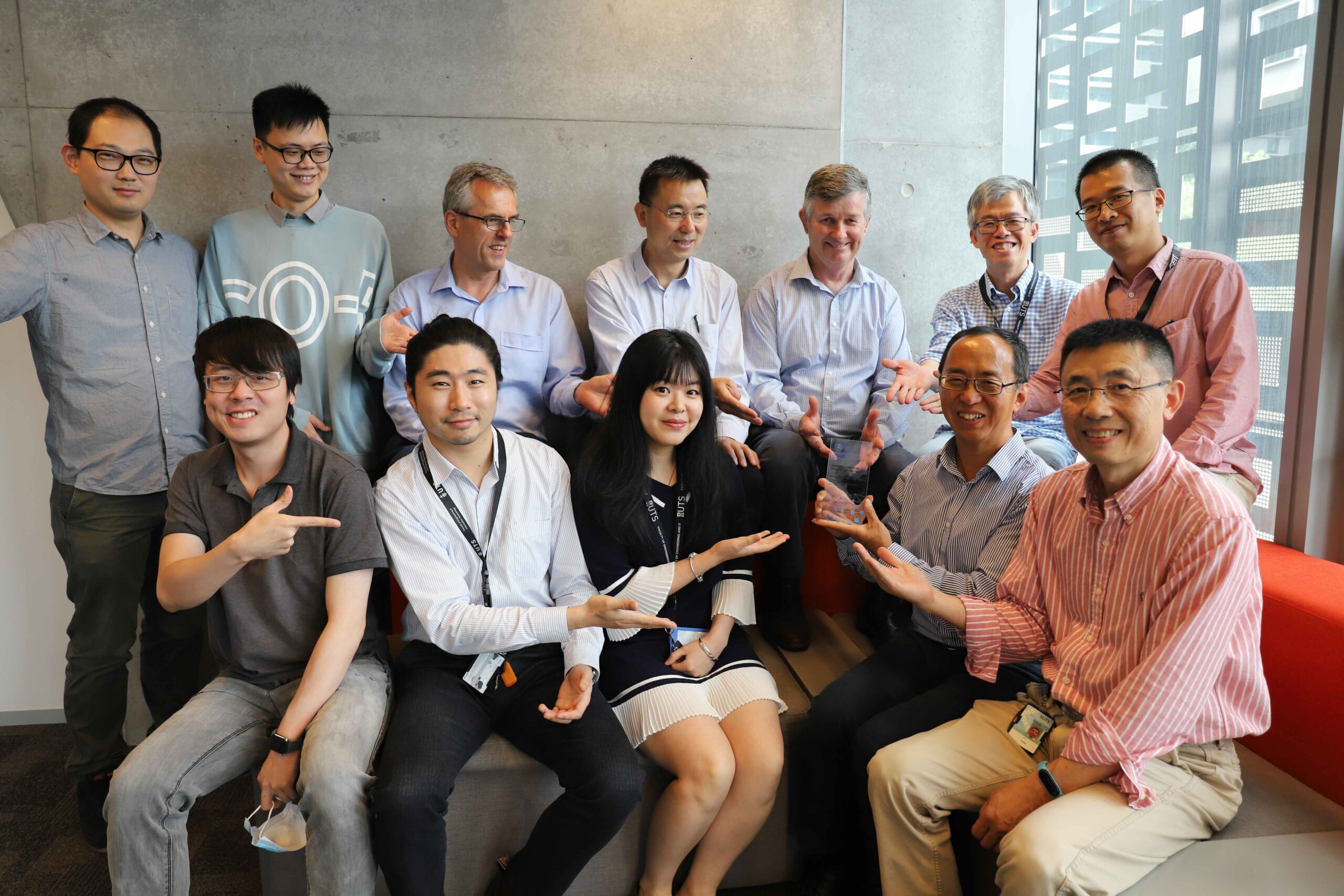Blockchain Projects
-
DLT-enhanced SLA Management

In the rapidly evolving digital landscape, managing network inventory and services efficiently is critical for maintaining global competitiveness and customer satisfaction. BT Global, in partnership with the University of Technology Sydney (UTS) and BT Applied Research, is pioneering a groundbreaking project to address these challenges using Distributed Ledger Technology (DLT).
-
Enhancing Policy and Workflow Management with Blockchain

Leveraging the transformative power of blockchain and smart contracts, our joint initiative seeks to enhance workflow and policy management, ensuring seamless, secure, and compliant operations across multiple industries. Join us in shaping a future where technology drives business efficiency and integrity.
-
Revolutionizing Inventory Management with Blockchain

Discover how Distributed Ledger Technology is transforming real-time inventory management in the telecommunications industry, enhancing trust, reliability, and security across global networks.
-
BeFAQT

Seafood auctions start from 5:30am every weekday at Sydney Fish Market, where buyers inspect the produce before their bidding. Sydney Fish Market had been planning to develop an online version of its famous seafood auction. The challenge then was how to provide the same onsite inspection experience (see, feel, and smell) to the online buyers.…
Blockchain Publications
-
[MWC] Accountability and Reliability in 6G O-RAN: Who is Responsible When it Fails?
Future sixth-generation (6G) networks aim to enable new services with vastly different data rates, latencies, and scalability requirements. Open radio access network (O-RAN), a key architecture for 6G, provides flexibility, openness, and interoperability. However, the open architecture of O-RAN poses challenges for network accountability and reliability. …
-
[ProvSec24] Enabling Efficient Cross-Shard Smart Contract Calling via Overlapping
As blockchain networks grow, sharding offers a promising solution to scalability challenges by dividing the network into smaller segments. However, managing cross-shard transactions, especially those involving smart contract calling, introduces significant complexities due to the extensive coordination required between shards. This paper introduces a novel framework for blockchain architectures with overlapping shards to address these…
-
[Acm Comput Surv] Blockchained federated learning for internet of things: A comprehensive surveyfiltering-and-voting framework with adaptive aggregation in federated learning
The demand for intelligent industries and smart services based on big data is rising rapidly with the increasing digitization and intelligence of the modern world. This survey comprehensively reviews Blockchained Federated Learning (BlockFL) that joins the benefits of both Blockchain and Federated Learning to provide a secure and efficient solution for the demand. We compare…
-
[ComNet] TbDd: A new trust-based, DRL-driven framework for blockchain sharding in IoT
Integrating sharded blockchain with IoT presents a solution for trust issues and optimized data flow. Sharding boosts blockchain scalability by dividing its nodes into parallel shards, yet it is vulnerable to the 1% attacks where dishonest nodes target a shard to corrupt the entire blockchain. Balancing security with scalability is pivotal for such systems. Deep…
-
[Blockchain23] A community-based strategy for blockchain sharding: Enabling more budget-friendly transactions
The promise of blockchain networks is occasionally overshadowed by challenges related to scalability and the escalation of gas fees. A significant portion of these gas fees arises from processing invalid or zero-value transactions, which imposes unnecessary costs and diminishes the technology’s intrinsic value. Sharding, which segments a blockchain into smaller, efficient shards, offers a solution,…
-
[TNNLS] IronForge: An open, secure, fair, decentralized federated learning
Federated learning (FL) offers an effective learning architecture to protect data privacy in a distributed manner. However, the inevitable network asynchrony, overdependence on a central coordinator, and lack of an open and fair incentive mechanism collectively hinder FL’s further development. We propose IronForge, a new generation of FL framework, that features a directed acyclic graph…
-
[ISCIT23] A Generative Adversarial Networks-Based Integer Overflow Detection Model for Smart Contracts
Due to the rapid development of blockchain technology in recent years, smart contracts have been widely applied in critical fields such as finance, insurance, healthcare, and the Internet of Things. However, smart contracts face increasingly serious security issues due to their unique operating environment and programming characteristics. We focus on Ethereum-based smart contracts and propose…
-
[TSMC] Adaptive Resource Scheduling in Permissionless Sharded-Blockchains: A Decentralized Multiagent Deep Reinforcement Learning Approach
Existing permissionless sharded-Blockchains come on the scene. However, there is a lack of systematic formulations and experiments regarding the behaviors of individual miners. In this article, we interpret block mining in a permissionless sharded-Blockchain as a repeated M -player noncooperative game with finite actions, and propose a new multiagent deep reinforcement learning (MADRL) framework to allow the…
-
[Elsevier IoT] A new concatenated Multigraph Neural Network for IoT intrusion detection
The last few years have seen a high volume of sophisticated cyber-attacks leading to financial instability and privacy breaches. This reveals the need for a Network Intrusion Detection System (NIDS) that is more robust, effective, and capable of learning complex relations of network flows. Existing machine learning approaches are barely effective for picking new attacks…
-
[ICBC23] Predicting NFT Classification with GNN: A Recommender System for Web3 Assets
The development of effective recommender systems for Web3 assets, such as the Non-Fungible Token (NFT), requires concentration along with the growth of popularity and heterogeneity in many potential applications such as Web3 gaming and NFT rental markets, the requirements of predicting rNFT classification desire a practical solution. In this paper, we make use of the…
